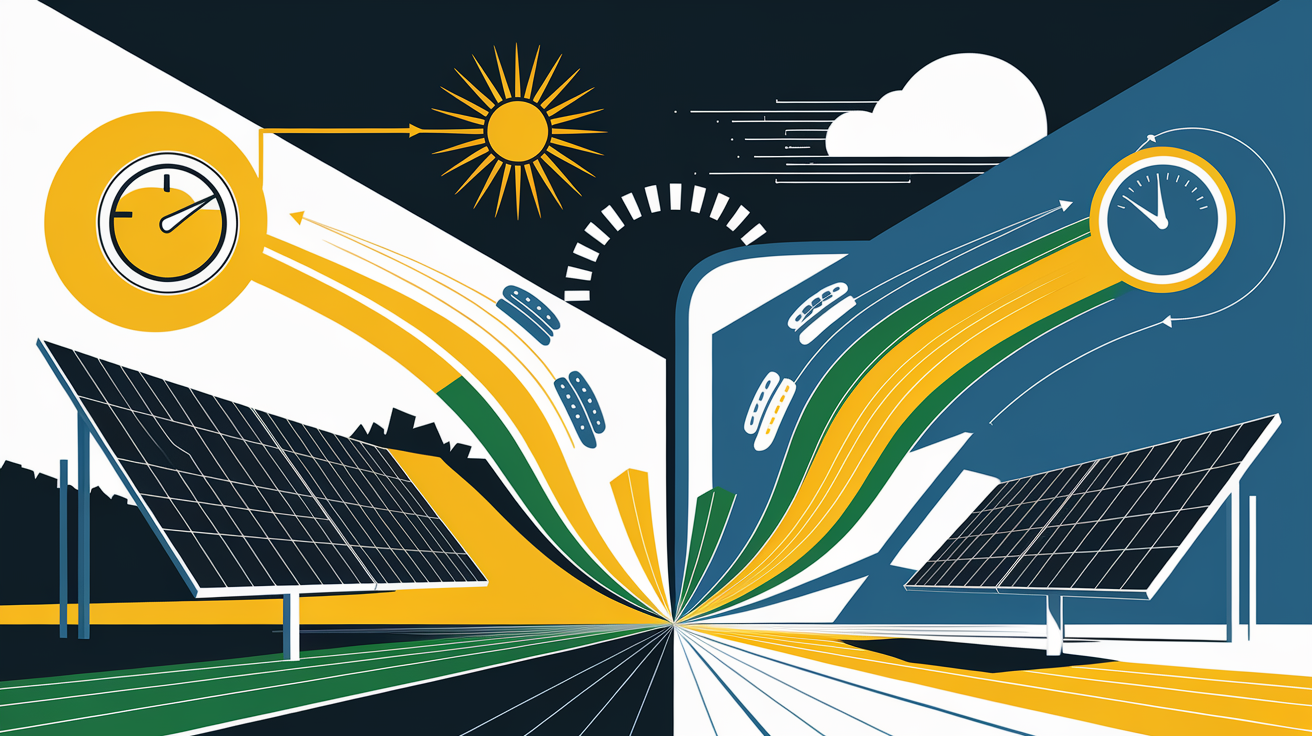Maximizing Solar Efficiency with PV-Thermal Hybrid Systems
Introduction – Harnessing Sunlight and Heat in Harmony
Photovoltaic-thermal hybrid systems (PVT) represent a decisive advancement in renewable energy, delivering both electricity and usable heat from the same solar collector. By uniting photovoltaic panels and thermal collectors in one integrated unit, these systems improve solar energy harvesting efficiency while making better use of available roof or land space. For businesses, institutions, and households focused on sustainable technology investments, PVT systems offer a way to lower energy costs, reduce carbon footprints, and achieve higher returns on solar installations without expanding physical footprint.
How PV-Thermal Hybrid Systems Work
PVT systems simultaneously convert solar radiation into electrical and thermal energy. The solar cells generate electricity via the photovoltaic effect, while the waste heat produced during electricity generation is captured through a connected thermal collector equipped with a heat transfer fluid. This dual capture process enables higher overall energy yield compared to standalone PV or solar thermal units. The extracted thermal energy can then be used directly for applications such as water heating or space heating, or stored for later use—providing an effective form of combined heat and power (learn more about combined efficiency).

Importantly, by cooling PV cells through heat recovery, the system mitigates losses caused by high temperature coefficients, boosting electrical output stability. This strategic thermal management directly addresses common inefficiencies found in conventional PV systems.
Benefits of PV-Thermal Hybrids
- Optimized land use: Generate electricity and capture heat from the same footprint.
- Higher total efficiency: Lower PV cell temperatures lead to improved electrical output, while recovered heat delivers practical energy for domestic or commercial needs.
- Reduced intermittency impact: Heat can be stored cost-effectively compared to electricity, supporting energy supply during low solar irradiance periods (explore efficiency definitions).
- Versatility of applications: From swimming pool heating to industrial process heat, the thermal energy output extends solar functionality well beyond standard PV use cases.
- Sustainability gains: Decreased reliance on fossil fuels for heating and reduced grid electricity demand.
Key Components and System Design
The design of a PVT system aligns with energy needs and climate conditions. Options generally include:

- Covered (glazed) PVT collectors: Incorporate an insulating air gap and glazing layer to minimize thermal losses, allowing higher operating temperatures between 25°C and 90°C—ideal for solar cooling, sanitation, or industrial applications. Anti-reflective coatings counteract optical losses from glazing (covered vs uncovered designs explained here).
- Uncovered PVT collectors: Simpler construction suited for low-temperature applications such as swimming pool heating or temperate domestic water heating, with maximum electrical efficiency due to no optical obstructions.
Additional components include heat exchangers for transferring thermal energy, control systems to manage fluid circulation, and performance optimization tools to balance electrical and thermal output.
Practical Applications and Use Cases
PVT systems have positioned themselves as highly adaptable energy solutions. Typical implementations include:
- Residential hot water and space heating: Integrated systems for efficient household use without separate thermal collectors.
- Commercial properties: Building integration for combined lighting power and heating needs, reducing utility dependence (research on hybridization strategies).
- Industrial processes: Supplying low- to mid-temperature heat for manufacturing, drying, or food processing.
- Desalination plants: Using recovered heat for thermal desalination processes.
- Swimming pools: Seasonal heating without separate cost-intensive installations.
These applications demonstrate not just energy efficiency gains but also how PVT systems solve operational challenges across diverse sectors.
Installation Considerations and Maintenance
When installing a PVT system, practical planning is essential:
- Sizing and system matching: Align collector area and capacity with peak energy demands for both heat and electricity.
- Climate optimization: Select glazed or unglazed collectors based on temperature requirements and environmental conditions.
- Integration: Ensure compatibility with existing heating systems, cooling loops, or grid connection requirements.
- Installation costs: While higher than single-function solar panels, ROI improves through combined energy outputs and reduced auxiliary system needs.
Maintenance involves routine inspection of PV modules, thermal circuit components, and heat transfer fluid levels. As with standard solar arrays, cleaning surfaces for unobstructed solar irradiance is key. In colder climates, ensure freeze protection in the thermal loop, particularly for uncovered PVT units where fluid exposure is greater.
Conclusion – Energizing Your Future with PV-Thermal Hybrids
PV-thermal hybrid systems are transforming how we think about and utilize solar energy. By integrating electricity generation and heat recovery within a single unit, they maximize total energy yield, optimize space efficiency, and deliver real-world cost benefits. Whether adopted for residential water heating, commercial building integration, or industrial process energy, PVT technology offers a forward-looking solution aligned with today’s sustainability and decarbonization goals. The best outcomes arise from smart system design, tailored to specific energy profiles and operating conditions—ensuring that every ray of sunlight drives both electrical and thermal performance in tandem.

Investing in PVT systems today means committing to a more efficient, resilient, and sustainable energy future—one where the sun’s power is harnessed to its fullest potential.







